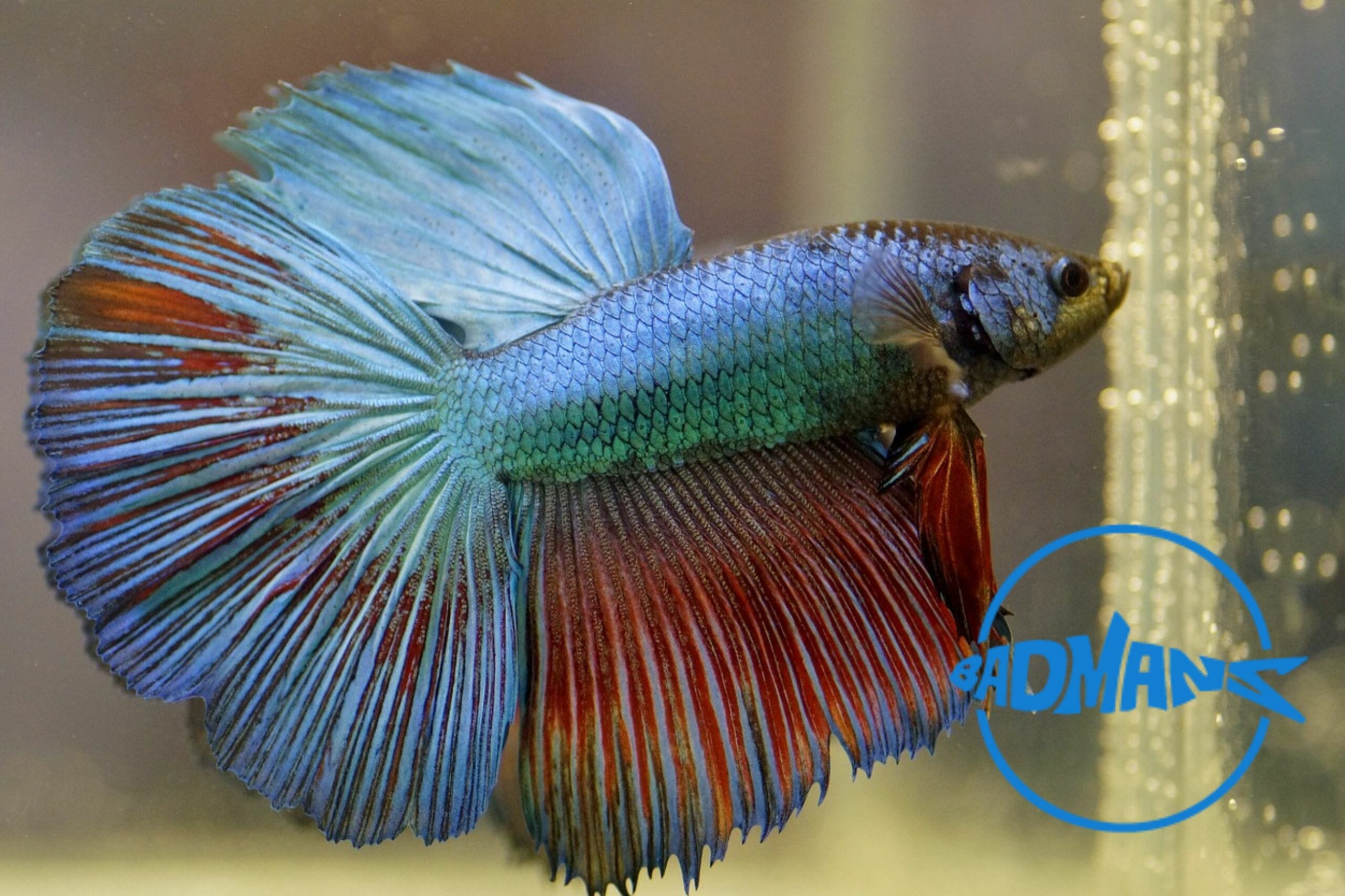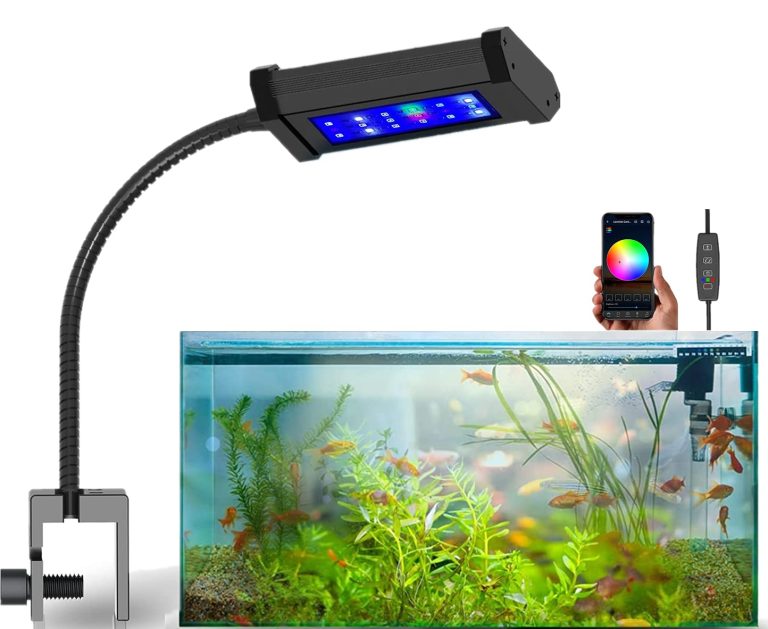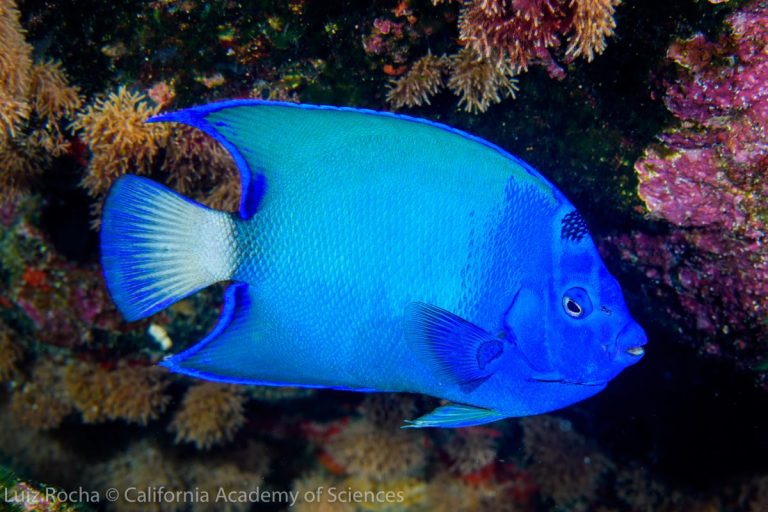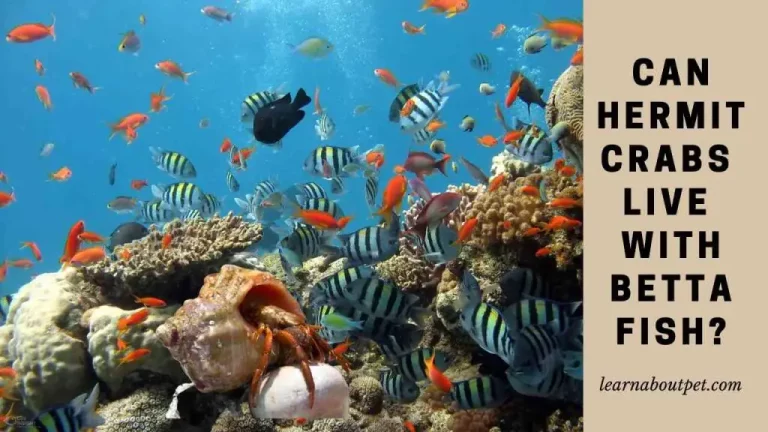Exploring Compatibility: Can Plecostomus Thrive Alongside Bettas?
Plecostomus cannot live with bettas due to their different needs and behaviours. Bettas require a peaceful environment, while plecostomus are territorial and may become aggressive.
Bettas and plecostomus are popular freshwater fish in the aquarium hobby. However, it is essential to understand their needs and compatibility before keeping them together. Bettas are known for their vibrant colours, grace, and solitary nature. On the other hand, plecostomus are popular for their algae-eating ability and hardy nature.
Despite their differences, many beginners wonder if it is possible to keep these species together in the same tank. Unfortunately, their incompatible behaviour, territorial behaviour, and space requirements make this pairing unsustainable. Read on to learn more about these fish and why they cannot coexist in the same tank.
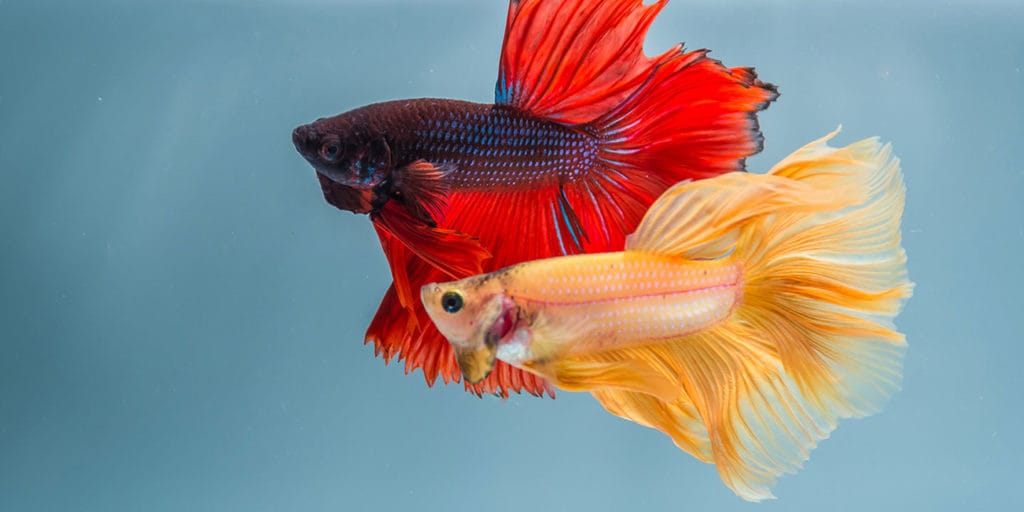
Credit: be.chewy.com
Overview Of Plecostomus
Plecostomus is a well-known freshwater aquarium fish, known for its distinct appearance and fascinating behavior. If you’re considering keeping plecostomus with bettas, it’s important to understand the characteristics and qualities of this species. In this section, we’ll provide an overview of plecostomus, including its physical features, behavior patterns, habitat preferences, diet preferences, and lifespan.
Physical Features
Plecostomus is a species of catfish that is native to south america. They have a unique appearance, with a flattened body covered in bony plates, giving them the appearance of an armored catfish. Some key physical features of plecostomus include:
- Size: Plecostomus can grow up to 24 inches in length, although most captive specimens typically are smaller.
- Color: Depending on their species, they can be light brown, dark brown, or black in color.
- Suckermouth: Plecostomus has a suckermouth that helps them attach themselves to surfaces.
Behavior Patterns
Plecostomus is known for its fascinating behavior patterns. Here are some key traits:
- Solitary: Plecostomus is a solitary fish that prefers to live alone, especially as they get bigger.
- Territorial: They may become territorial, particularly during feeding time.
- Nocturnal: Plecostomus is primarily a nocturnal fish, which means they are active at night.
Habitat Preferences
Plecostomus is a freshwater fish that originates from the amazon river in south america. They prefer to live in slow-moving waters with low to moderate currents. Here’s what you need to know about their habitat preferences:
- Aquatic plants: Plecostomus enjoys living amongst aquatic plants and will actively consume some of them.
- Water preferences: Plecostomus prefers water with a ph of 6.5-7.5 and a temperature range of 75-82°f.
Diet Preferences
Plecostomus is classified as an omnivore. Here’s what you should know about their diet:
- Omnivorous: They enjoy eating both plant and animal-based foods.
- Plant-based: They will enjoy consuming vegetables such as cucumbers and zucchini.
- Quality food: Plecostomus will prefer high-quality food that has a variety of nutrients.
Lifespan
The lifespan of plecostomus can vary depending on several factors, including genetics, diet, water quality, and environmental conditions. However, they can typically live up to 10-15 years if kept in optimal conditions.
Overall, plecostomus is a fascinating fish species known for its unique appearance and behavior patterns. If you want your plecostomus to thrive, it’s crucial to understand their physical features, behavior patterns, habitat preferences, diet, and lifespan. Now that we’ve provided an overview of plecostomus, let’s move on to whether they can live with bettas.
Overview Of Bettas
Overview Of Bettas:
Bettas, also known as siamese fighting fish, originate from southeast asia. They are a popular freshwater fish that are known for their vibrant colors and often aggressive behavior. Understanding their physical features, behavior patterns, habitat preferences, diet preferences, and lifespan can help ensure that they live a healthy, happy life in captivity.
Physical Features:
- Bettas are small, typically growing to be about 2-3 inches in length.
- They have long, flowing fins that add to their beauty but also make them vulnerable to fin rot and other ailments.
- Male bettas are brightly colored with long fins, while females tend to have shorter fins and less vibrant colors.
- They have a labyrinth organ that allows them to breathe air from the surface, so they do not need a constant flow of oxygen-rich water.
Behavior Patterns:
- Male bettas are known for their aggressive behavior, especially towards other males and brightly colored fish.
- Females can also be aggressive with each other, but they tend to be less territorial overall.
- Bettas are relatively solitary fish and prefer to live alone in a tank.
- They can be trained to recognize their owners and may come to the surface of the tank to interact with them.
Habitat Preferences:
- Bettas are native to shallow, slow-moving waters in southeast asia.
- They prefer water that is warm and acidic, with a ph between 6.5 and 7.5.
- They need access to the surface of the water to breathe air.
- Bettas prefer to have plenty of hiding spots in their tank, such as plants or decorations.
Diet Preferences:
- Bettas are carnivorous and prefer a diet of live or frozen foods, such as brine shrimp or bloodworms.
- They can also eat high-quality pellets or flakes specifically formulated for bettas.
- Overfeeding can lead to health problems, so it is important to only feed them small amounts at a time.
Lifespan:
- With proper care, bettas can live for 3-5 years in captivity.
- Bettas are susceptible to health problems such as fin rot and swim bladder disease, which can shorten their lifespan.
- Good water quality and a healthy diet can help bettas live a long, happy life.
Overall, bettas can be a rewarding and beautiful addition to a freshwater aquarium. With proper care and attention, they can live a long and healthy life.
Water Chemistry
Can Plecostomus Live With Bettas: Water Chemistry
When it comes to the compatibility of plecostomus and bettas, water chemistry is a crucial factor that can impact their coexistence. Let’s take a look at the key points that you should keep in mind regarding water chemistry.
Ph
The ideal ph range for bettas is 6. 0 to 7. 5, while the optimal range for plecostomus is between 6. 5 and 7. 8. To ensure the perfect ph level for both species, use driftwood and rock decorations in the tank.
These items can help regulate ph levels and create an environment where both fish can thrive.
Temperature
Bettas prefer warmer water than plecostomus. Bettas prefer a temperature range of 77-82°f, while plecostomus prefers a lower temperature range of 73-82°f. Therefore, it is essential to maintain a consistent temperature that falls within the preferred range for both fish, to avoid stress and health issues.
Other Parameters
Other parameters that could impact compatibility include:
- Ammonia and nitrite levels: High levels of ammonia and nitrite can cause health issues for both species. It is essential to maintain proper filtration and to perform regular water changes to keep levels down.
- Water hardness: The ideal water hardness range for bettas is 5-20 dgh, while plecostomus prefers a higher range of 5-20 dkh. A balance between the two ranges should be maintained for both fish to be comfortable in their environment.
- Water movement: Bettas like low water movement, while plecostomus prefers mild to moderate water movement. Provide areas in the tank with different water flow so that both fish can choose an area that suits their preferences.
When it comes to the compatibility of plecostomus and bettas, water chemistry is vital. By maintaining the correct ph, temperature, and other parameters, you can create a harmonious and ideal environment for both fish to thrive.
Tank Size And Setup
Are you wondering if a plecostomus and a betta fish can coexist in the same aquarium? While they can live together, there are certain considerations you should keep in mind before introducing them to the same tank. One of the most important factors you need to consider is the size and setup of the aquarium.
Ideal Tank Size And Setup For Plecostomus And Bettas
When choosing the right tank, it’s crucial to select one that provides both fish with enough space to swim around and claim territories. Here are some things you should keep in mind when it comes to the ideal tank size and setup:
- Both plecostomus and betta fish require ample swimming space. Therefore, the recommended minimum tank size for a betta fish is 5 gallons, while for a plecostomus, it’s 30 gallons or more, depending on its size.
- Plecostomus requires a lot of hiding places, so make sure you add plenty of caves, driftwood, or plants in the aquarium where it can hide and feel safe.
- Bettas like to swim near the surface of the water, so it’s essential to have some plants or floating objects for it to rest on.
- Choose a filter strong enough for the tank’s size and make sure you replace the filter cartridges regularly.
- Keep the water conditions stable, with a temperature of 72-78°f and a ph range of 6.5-7.5. Perform regular partial water changes every two weeks to maintain water quality.
Overall, the key to having a successful combination of plecostomus and betta fish in the same tank is to provide enough space, hiding spots, and a stable environment. By following these guidelines, you can create a healthy and happy aquarium environment for both your plecostomus and bettas.
Aggression Levels
Understanding Bettas’ Aggression Levels
Bettas are known to be territorial and aggressive, which makes them a challenging fish to keep with others. But how do you determine their aggression levels? Here are some key points to help you understand:
- Male bettas are more aggressive than females. They will flare up their fins, gills, and body to intimidate their competition, which can cause stress and harm to other fish.
- Bettas will claim a specific area within their tank as their territory, and they will defend it against any intruders.
- The colors of bettas can indicate their mood or aggression levels. Darker colors may signify aggression, while lighter hues mean they are in a more relaxed state.
Key Considerations For Introducing Plecostomus To Bettas’ Tanks
While it is possible to keep plecostomus with bettas, there are some key points to consider before introducing them to the same tank:
- The size of your tank matters, as both bettas and plecostomus need enough space to establish their territories and roam around.
- The temperament of your betta is crucial, a peaceful betta is ideal for plecostomus as they won’t pose a threat.
- Be sure to have plenty of hiding spaces for plecostomus as they are nocturnal and prefer to hide during the day. This will also reduce stress levels in bettas.
Here are some additional points to keep in mind when considering adding plecostomus to a betta tank:
- Plecostomus are bottom-dwellers and primarily eat algae, so be sure to supplement their diet with other foods if necessary.
- Keeping water quality and maintaining proper filtration for the tank is vital, as plecostomus produce a lot of waste.
- It’s important to note that plecostomus can grow up to two feet in length, outgrowing even larger tanks.
While it is possible to keep plecostomus with bettas, it’s important to understand betta’s aggression levels and choose a peaceful betta while also having enough space to accommodate both fish. Providing a variety of hiding spaces for plecostomus and maintaining proper water quality with sufficient filtration will help ensure a healthy and harmonious tank.
Diet And Feeding Habits
Can Plecostomus Live With Bettas – Diet And Feeding Habits
Plecostomus and bettas are popular aquarium fishes, and keeping them together is a topic of debate amongst aquarists. While some have successfully kept them together, others warn against it. One of the critical considerations involved in keeping these two species together is their dietary requirements.
Therefore, in this section, we will analyze each fish’s dietary preferences and suggest strategies for ensuring optimal nutrition for both fishes.
Analysis Of Plecostomus And Bettas Dietary Preferences
Plain paragraph:
Plecostomus and bettas have different dietary preferences, and feeding them incorrectly can lead to several health problems. Plecostomus is an omnivorous fish species that predominantly feeds on algae and other plant matter. In contrast, bettas are carnivorous fish and mainly feed on insects, zooplankton, and small crustaceans.
Bullet points:
- Bettas require a high protein diet, while plecostomus needs a high amount of algae and plant matter.
- Plecostomus requires a varied and balanced diet that includes fresh vegetables, algae wafers, and occasionally frozen or live shrimp.
- Bettas prefer premium quality fish flakes, pellets, and frozen or live bloodworms.
Strategies For Ensuring That Each Fish Receives Adequate Nutrition
Plain paragraph:
Since bettas and plecostomus have different dietary needs, it’s essential to adopt strategies to ensure that each fish receives the appropriate amount of nutrition.
Bullet points:
- Feed bettas and plecostomus separately to control the amount of food each fish gets.
- Offer bettas small amounts of food multiple times a day to mimic their natural feeding habits, while it’s recommended you feed plecostomus 1-2 times a day.
- Add live plants to the aquarium to provide natural food for plecostomus and encourage algae growth.
- Add a mix of live and frozen food to the diet of both fish species to mimic their natural feeding habits.
- Monitor the amount of food each fish gets and adjust their diet accordingly to avoid underfeeding or overfeeding.
While plecostomus and bettas have different dietary preferences, you can certainly keep them together provided you cater to their nutritional needs appropriately. By following the suggested strategies, you can ensure the optimum health and longevity of both your fish species.
Keep in mind that a healthy and well-fed fish is always a happy fish.
Health Risks
Can Plecostomus Live With Bettas: Discussing Potential Health Issues
Aquarium enthusiasts often search for the perfect tankmates for their bettas. With their peaceful and friendly nature, plecostomus or “plecos” seem like an excellent choice. While plecostomus can live with bettas, it’s essential to understand the potential health risks that come with this pairing.
Let’s take a look at some of these risks and discuss strategies to mitigate them.
Risks Associated With Keeping Plecostomus With Bettas
- Aggressiveness: Bettas have territorial behavior and can become aggressive towards plecostomus, inflicting injury or stress.
- Parasites and disease: Plecos are susceptible to various infections and parasites, which bettas can contract from them.
- Water quality: Plecostomus produce a lot of waste that can impact the water quality in the tank, leading to health problems for both plecos and bettas.
Strategies For Mitigating Risks
- Tank size and setup: Ensure that the tank has plenty of hiding spaces and ample room for both fish to thrive without feeling cramped.
- Introduce slowly: Add plecostomus later into an already established betta tank, allowing bettas to recognize their territory and become less territorial.
- Quarantine: Quarantine plecostomus for two weeks before introducing them to a betta tank. This will help detect any signs of illness.
- Maintain good water quality: Plecostomus needs a good filtration system capable of handling their waste. It is recommended to do weekly water changes and test the water parameters regularly.
- Feed quality food: Provide high-quality food to plecostomus regularly. This will ensure that they are healthy and less likely to get infected.
While plecostomus can live with bettas, there are potential health risks that come with it, such as aggressiveness, parasites, and disease, and water quality. To help mitigate these risks, it’s essential to follow the strategies mentioned above. By ensuring bettas and plecostomus are healthy and happy, their bond is sure to flourish in the tank.
Acclimation Strategies
Can Plecostomus Live With Bettas: Acclimation Strategies
Plecostomus and bettas can be kept together in the same aquarium. However, special care and attention to their acclimation process is crucial to their survival. In this blog post, we will discuss some important procedures for gradually introducing plecostomus to bettas’ aquatic environment.
The Importance Of Acclimation Procedures
Acclimation is a slow and systematic process of introducing new fish to their new environment. It is essential because it minimizes stress levels and prevents fish from going into shock, which can lead to their death. The following are some of the reasons why it is essential to acclimate plecostomus to bettas’ aquatic environment:
- Allows the fish to adjust to new water parameters gradually
- Minimizes the risk of cross-contamination
- Prevents any sudden shock that could be fatal for the fish
- Reduces the risk of diseases spreading among other fish
Guidelines For Slowly Introducing Plecostomus To Bettas’ Aquatic Environment
To acclimate plecostomus to bettas’ aquatic environment, follow these guidelines:
- Temperature match – ensure the temperature of the tank where the plecostomus was kept matches the temperature of the betta’s tank.
- Water parameter match – ensure the ph, hardness, and other water parameters match between the two tanks. If they are different, start by gradually matching the parameters using small amounts of water from each tank over multiple days.
- Containment – place the plecostomus in a separate container, and float it on the surface of the betta’s tank for around 20-30 minutes. This enables the fish to get acclimated.
- Release – after the fish gets acclimated and starts to swim, pour some water from the betta’s tank into the bag (or container). Do this every 10 minutes for an hour. Then, finally, let the plecostomus free into the betta’s aquarium.
- Observe – observe the behavior of plecostomus closely for the next 24-48 hours. Stress can cause them to hide, but if their health is good, they will come out soon.
By following these steps, you will have successfully introduced your plecostomus to your betta tank while minimizing the risk of stress and shock.
It is crucial to follow these guidelines for acclimating plecostomus to bettas’ aquatic environment. They will guarantee that your fish stays healthy and happy. Happy fish owners mean a happy aquarium.
Feeding Techniques
Can Plecostomus Live With Bettas? Feeding Techniques
If you are considering keeping plecostomus with bettas, it is important to familiarize yourself with the feeding techniques that will ensure compatibility between the two species. Feeding them properly can help promote optimal health and reduce the chances of aggressive behavior.
Approaches For Feeding Plecostomus And Bettas Compatibly:
Plecostomus:
- Feed plecos at night when betta fish are less active to avoid competition for food.
- Offer veggies like cucumbers, zucchini, and algae to supplement their diet.
- Feeding them fish flakes or pellets can also be beneficial.
Bettas:
- Feed bettas species-specific meals with high nutrition value such as betta flakes or pellets.
- Avoid overfeeding as they tend to gorge, causing bloating.
- Add live or frozen foods such as brine shrimp and bloodworms as a treat to their meals.
It is crucial not to forget that both species are unique in their dietary needs and feeding preferences. As such, it is essential to research these requirements and create a feeding regimen that is not only compatible but also beneficial to both species.
Making Sure Plecostomus And Bettas Get The Right Nutrients:
As aquatic pets, supplements are an excellent way to ensure adequate nutrient absorption and overall health. The essential nutrients needed for betta and plecostomus species must be included in their diet. By supplementing their meals, it is possible to:
- Improve their immune systems which reduces the risk of bacterial or parasitic infections.
- Promote bright colors that are unique to each species.
- Support the growth and maintenance of their scales and fins.
It is, however, important to get supplements from a reliable manufacturer to avoid contamination or impurities that may harm the fish instead.
Feeding plecostomus and bettas is all about finding a compatible feeding regimen that caters to the nutritional needs of both species. By supplementing their diet and creating feeding schedules, you will not only ensure these fit into your lifestyle, but you will also have happy and healthy aquatic pets.
Tank Maintenance
Can Plecostomus Live With Bettas
If you’re thinking about keeping plecostomus and bettas together, it’s important to know how to maintain their tank’s health. Here, we will go through some essential techniques for keeping both species healthy in the same environment.
Maintaining the tank’s cleanliness and quality of water is essential for keeping any fish alive and healthy. Here are some techniques to ensure that the habitats of both plecostomus and bettas are healthy:
- Keep the tank clean: The tank must be cleaned once a week to remove any waste and debris.
- Use an efficient filtration system: A suitable filtration system must be employed to ensure the removal of toxins in the water.
- Avoid overfeeding: Overfeeding the fish can lead to the accumulation of waste and debris in the tank.
- Control the water temperature: Bettas prefer a warmer temperature than plecostomus, so ensure the temperature is suitable for both species.
- Monitor the ph level of the water: Keep the ph level of the water between 6.8 and 7.5 to ensure the survival of both species.
- Add aquatic plants to the tank: Aquatic plants purify the water by absorbing harmful chemicals and providing oxygen to the fish.
These maintenance techniques will be beneficial in ensuring that both plecostomus and bettas can thrive in the same tank environment. By following them, you can make sure that your fish companions remain healthy and happy.
Monitoring And Observation
Importance Of Monitoring And Observing The Plecostomus/Bettas Pairing
Living with multiple aquatic life forms can be challenging, especially when it comes to betta and plecostomus coexisting in the same tank. While some people believe that keeping these two together is not a good idea, the truth is they can get along with the proper monitoring and observation of their interactions.
You need to devote some time and attention to your aquatic pets to ensure that they are comfortable with each other and make sure that there are no disputes between them. Here are some key points to know for optimal coexistence:
- Monitor fish behavior: Keeping an eye on how your fish interact with each other is paramount to ensure the success of their coexistence. Observe how they move, how they eat, and how they interact with their surroundings. These factors will tell you if they are comfortable or not.
- Provide enough space: No matter how peaceful your fish are, if they do not have enough space to swim and move around, they will inevitably become agitated and stressed. Always ensure that there is enough space in the tank for all of your aquatic life forms.
- Spot territorial behavior: Bettas tend to be territorial, and they do not appreciate having anything in their space. Plecostomus fish, on the other hand, are known to be herbivores and may nibble on plants. You need to observe how each fish responds to the other and make sure that there are no territorial disputes.
- Change their diet: A happy fish is a well-fed fish. By providing different types of food, you can encourage your plecostomus and bettas to stick to their own interests and significantly reduce the risk of aggression.
- Keep the tank clean: Proper maintenance of the tank can minimize aggression, ensuring that your aquatic pets live in a clean and healthy environment. Frequent water changes, proper filtration, and a balanced ecosystem will help keep your pets healthy and happy.
With proper care, monitoring, and observation of these pet fish, you can ensure that bettas and plecostomus live together peacefully in the same tank.
Frequently Asked Questions For Can Plecostomus Live With Bettas
Can Plecostomus Live With Bettas In The Same Tank?
Yes, plecos can live with bettas but they need space and hiding spots.
Can Betta Fish Eat Plecostomus?
No, betta fish won’t eat plecos, but can sometimes attack them if feeling threatened.
Do Plecos Need A Heater In Their Tank?
Yes, plecos need a heater to keep the water temperature consistent.
How Big Do Plecostomus Grow?
Plecos can grow up to 2 feet long, depending on the species and tank size.
Conclusion
In short, keeping a plecostomus with bettas is possible, but not without careful considerations and preparations. While both species are peaceful and compatible, it’s crucial to ensure they have enough space, hiding spots, and appropriate tank mates. Plecos can grow quite large, so a larger tank is recommended.
Ensuring a varied and balanced diet is necessary to keep both the bettas and plecostomus healthy. Proper water conditions and regular maintenance are also crucial. By providing a suitable environment and proper care, keeping these two species together can be a rewarding experience.
However, always keep in mind the individual personality and behavior of each fish and be prepared to make necessary adjustments for their well-being. Ultimately, when done correctly, keeping a plecostomus with bettas can be a delightful and successful endeavor.
